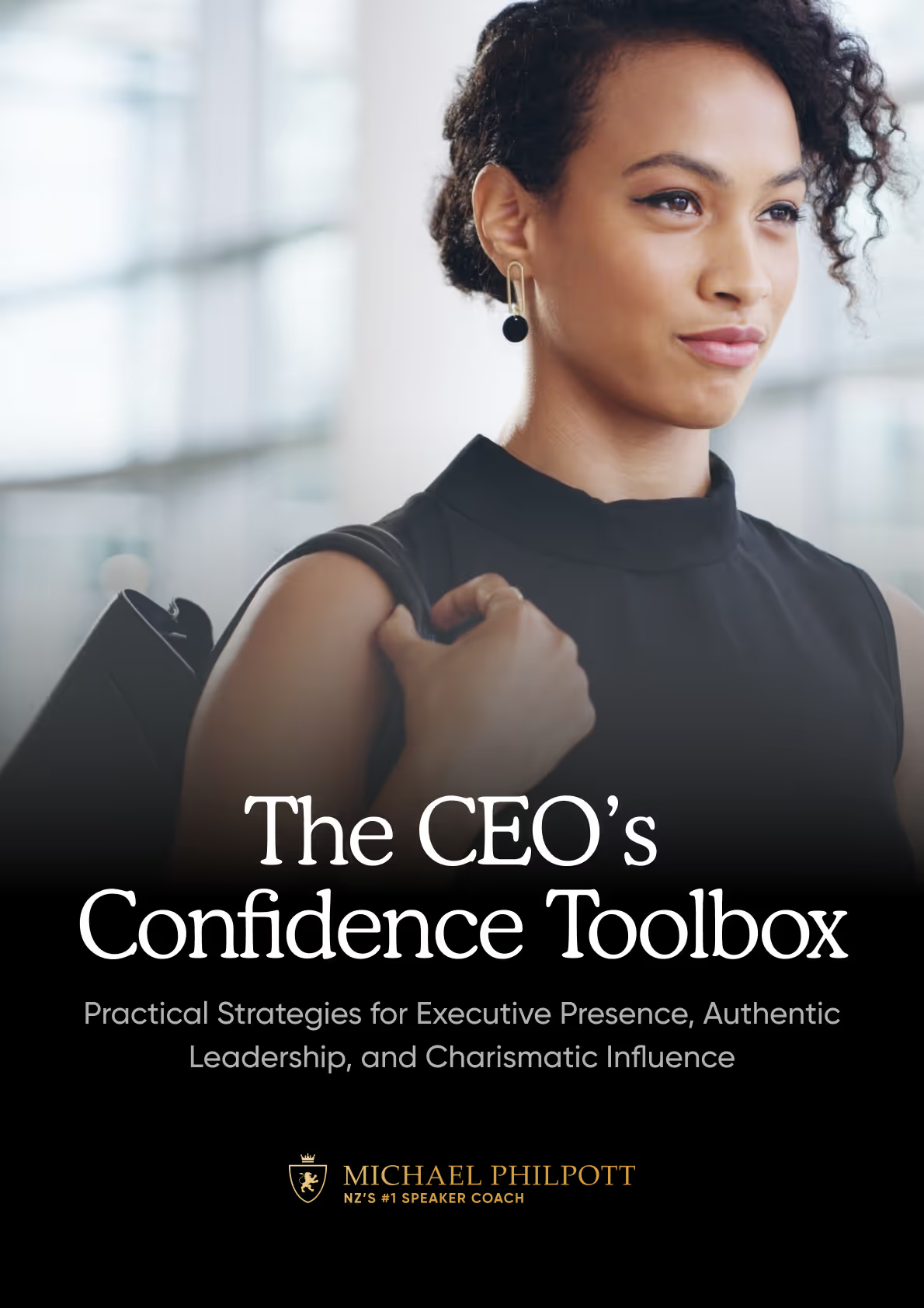Over the past year, I’ve had over 50 follow-up calls with professionals, managers, and executive leaders across New Zealand and Australia.
These weren’t sales calls. They were complimentary coaching sessions I offered after public workshops, keynotes, or private training... an opportunity for each person to reflect, refine, and apply what they learned.
At first, they seemed simple. A nice value-add. A way to build relationships.
But the more I listened, the more I realised something: these calls were revealing patterns. Not just about speaking. But about how leaders think, lead, avoid, fear, prepare, and show up under pressure.
This article is a snapshot of those conversations. The problems people brought. The pain underneath. The strategies that helped. And the truth about what it takes to become a powerful communicator when the stakes are high.
1. Most leaders don’t have a speaking problem. They have a thinking one.
Most people I spoke with didn’t need to become charismatic performers. What they needed was structure.
In fact, the most common opening line in these calls was something like:
“I just want to feel more confident when I speak.”
But as we unpacked that, it became clear: confidence wasn’t the real problem. It was clarity.
They were trying to share too much. Or hadn’t figured out what they actually wanted their audience to remember. Or they were winging it out of habit.
The shift came when I asked:
“By the end of your talk, what’s the one thing you want people to think, feel, or do?”
When we found that answer, everything changed.
Clarity drives confidence. Not the other way around.
2. Even senior leaders fear judgment.
In almost every call, I heard some version of this:
“I just don’t want to sound stupid.” “What if I freeze?” “I hate the sound of my voice.”
These weren’t junior staff. Many were experienced leaders managing multi-million dollar portfolios or speaking in front of 800-person town halls.
But the fear of looking foolish, rambling, or underdelivering was still there. And often, they’d never had real feedback. No one had ever said, "Here’s what you’re doing well. Here’s what to tweak. Here’s how to grow."
Which is why video was a breakthrough tool.
When leaders saw themselves back without judgment, just with curiosity, they could finally move past self-consciousness and into self-awareness.
Self-awareness is a performance superpower.
3. Authenticity is misunderstood.
There’s a belief out there that to be authentic, you have to speak off the cuff. That scripting is fake. That preparation kills presence.
But I saw the opposite.
Authenticity isn’t about being raw. It’s about being intentional.
When speakers had a clear message, rehearsed delivery, and emotional connection to their story, they became more authentic, not less.
One safety leader was terrified of seeming stiff. But once he learned to rehearse without memorising, his natural warmth came through. And his team responded like never before.
Authenticity is not what you say. It’s how you make people feel.
4. Charisma can be taught.
You don’t have to be extroverted to be engaging. And you don’t have to be loud to be memorable.
From frontline managers to CEOs, the leaders I spoke with consistently became more compelling when they started using small but powerful techniques from the world of charismatic communication.
Like:
- Speaking in contrasts (“It’s not about pressure. It’s about presence.”)
- Using three-part lists (“We need clarity, courage, and conviction.”)
- Framing the problem before giving the plan
These are called Charismatic Leadership Tactics, and there’s research to back them. When leaders started applying them with their own stories, everything lifted: engagement, credibility, and trust.
Charisma is not a personality type. It’s a skill set.
5. Real transformation happens after the workshop.
Workshops light the fire. But follow-up calls keep it burning.
Because that’s when the real questions come out:
- “How do I support a nervous team member?”
- “Can I turn this 3-minute update into a story?”
- “I’ve got to talk to the Board next week - can we frame it right?”
It’s in these moments that change sticks. When ideas become actions. And when people move from theory to traction.
One regional manager came to the call overwhelmed by her upcoming keynote. We didn’t rewrite her talk. We clarified the message, simplified the slides, and ran a stand-up rehearsal. She nailed it. 800 people. Standing ovation.
The real win isn’t learning what to do. It’s knowing how to do it when it counts.
Final Thoughts
After 50+ conversations, here’s what I know for sure:
No one is born a confident speaker. But anyone can become one.
The most powerful communicators aren’t perfect. They’re just prepared, practiced, and present.
If you’re reading this and thinking, “That’s me”... good.
There’s nothing wrong with you. You don’t need fixing.
You just need tools, feedback, and a safe place to grow.
And that’s what these 50 calls have reinforced, again and again.
When you change the way you speak, you change the way people see you. And that changes everything.




